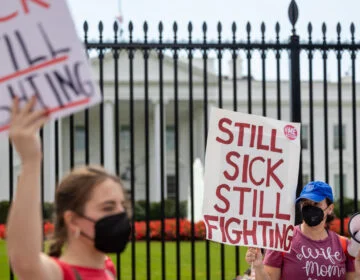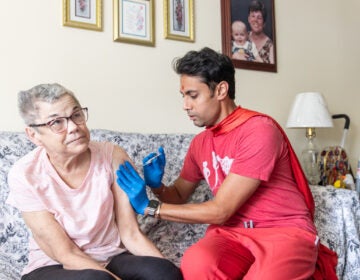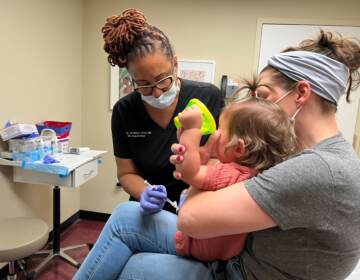Unlike Philly, no mask mandate planned in Delaware even as COVID cases, hospitalizations rise
The number of COVID infections and hospitalizations is up substantially in the last few weeks, but the numbers are a mere fraction of mid-January’s peaks.
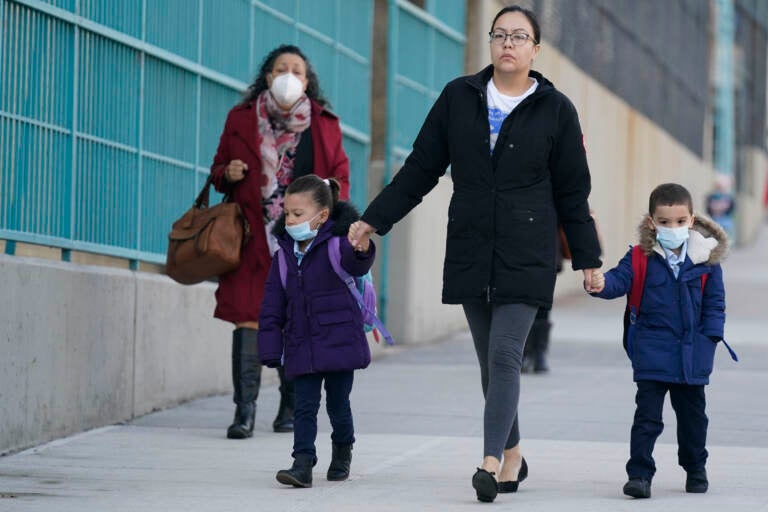
FILE - Children and their caregivers arrive for school in New York, Monday, March 7, 2022. The Biden administration will extend for two weeks the nationwide mask requirement for public transit as it monitors an uptick in COVID-19 cases. The Centers for Disease Control and Prevention was set to extend the order, which was to expire on April 18, by two weeks to monitor for any observable increase in severe virus outcomes as cases rise in parts of the country. (AP Photo/Seth Wenig, File)
The first thing Dr. Karyl Rattay does every morning is check the data.
The numbers that so concern Rattay, director of the Delaware Division of Public Health, are those pertaining to COVID-19. Of primary interest are cases of coronavirus, the positivity rate, and most importantly, the hospitalizations.
“We are watching very closely,’’ Rattay said in an interview this week as Philadelphia announced that rising case numbers had triggered a mandatory indoor mask mandate starting Monday, April 18.
By contrast, Delaware, which has also seen steady increases in the last few weeks in each of the three main metrics that Rattay watches, is not taking any restrictive action, at least not yet. Nor are there any benchmarks to do so.
“We’re not surprised that we’re seeing an uptick in cases at this point in time. But I don’t see it as anything concerning at this point,” Rattay said.
The numbers and recent increases:
- The weekly average of new daily cases is 119 — double the count of 59 three weeks ago.
- The positivity rate is 5.2% — a 79% increase from 3.2% three weeks ago.
- 34 patients are currently hospitalized — up 79% from the 19 infected people getting inpatient care just two weeks ago.
The current numbers are a mere fraction, however, of the astronomical rates reached just three months ago, when there were 3,321 daily cases, 729 people in the hospital, and 32% of tests were positive.
Those alarming, record numbers attributed to the highly transmissible omicron variant, led Carney to re-institute an indoor mask mandate.
But the numbers fell precipitously and Carney lifted the general mask mandate on Feb. 11 and the K-12 school mandate on March. 1, one month earlier than the date he had previously set.
So, while numbers are now moving higher as more people are traveling and enjoying restaurants, bars, shopping, and learning without limits, Rattay and Carney are not prepared to take action or even say what would precipitate the government to do so.
Carney would not agree to an interview about his perspective, but spokeswoman Emily David attributed the recent increase in Delaware and in parts of the nation “to a combination of factors including relaxation of mitigation strategies like social distancing and mask-wearing along with the presence of the BA.2 subvariant and increased travel.”
David urged people to periodically check the state’s coronavirus website while stressing that “it’s important for people to know that they’ve got the tools to keep themselves safe at their disposal – and they can use them at any time.
“Make sure you’re up to date with your vaccines, including with your booster, get tested if you have COVID-19 symptoms, stay home if you feel sick, and choose to wear a mask if it makes you feel safer, or if you have a weakened immune system, or around others who are vulnerable” such as senior citizens, pregnant women and those with chronic health conditions.
While 94% of Delaware adults are at least partially vaccinated, Rattay continues to exhort parents to get their children inoculated, and younger adults to do the same.
Among kids ages 5 to 11, only 34% have gotten at least one shot. Among those 12 to 17, the rate is 66%, and among adults 18 to 34, it’s 65%.
While younger, healthier people are less likely to suffer adverse effects, Rattay said the fact that so many are not inoculated “makes this population vulnerable to becoming infected” and spreading the virus.
But Rattay doesn’t agree with the notion of setting threshold limits to enact restrictions as Philadelphia has done.
“Because this virus changes and evolves, metric threshold values are not as helpful. You have to look at the whole picture, you have to look at multiple indicators to really get the story.”
Jennifer Horney, a University of Delaware epidemiologist who tracks Delaware’s COVID-19 situation, thinks cases will fluctuate over the next several months.
Noting that “pandemic fatigue’’ has hit many area residents and politicians now that the virus is in its third year and the current toll is relatively low, Horney understands that people “are not tuned in to” the numbers anymore.
So she thinks the governor would be wise to set some benchmarks so people will know what will happen if cases and hospitalizations rise to concerning levels.
Carney should be “really communicating as far in advance what the changes may be so that people have time to prepare,” she said.

Get daily updates from WHYY News!
WHYY is your source for fact-based, in-depth journalism and information. As a nonprofit organization, we rely on financial support from readers like you. Please give today.




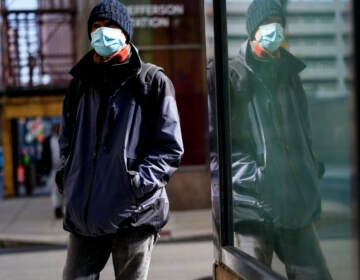
![CoronavirusPandemic_1024x512[1]](https://whyy.org/wp-content/uploads/2020/03/CoronavirusPandemic_1024x5121-300x150.jpg)
